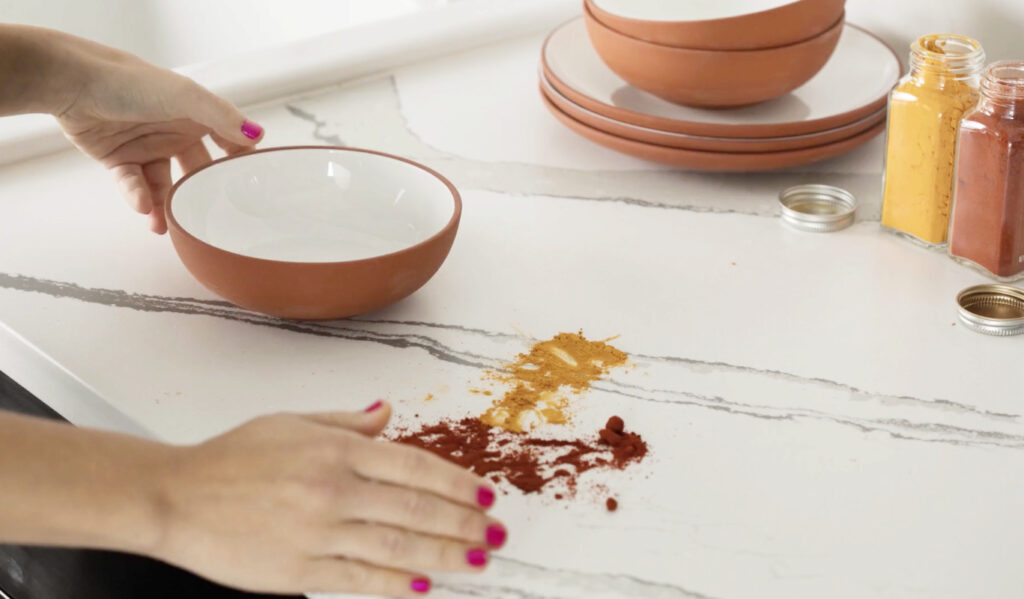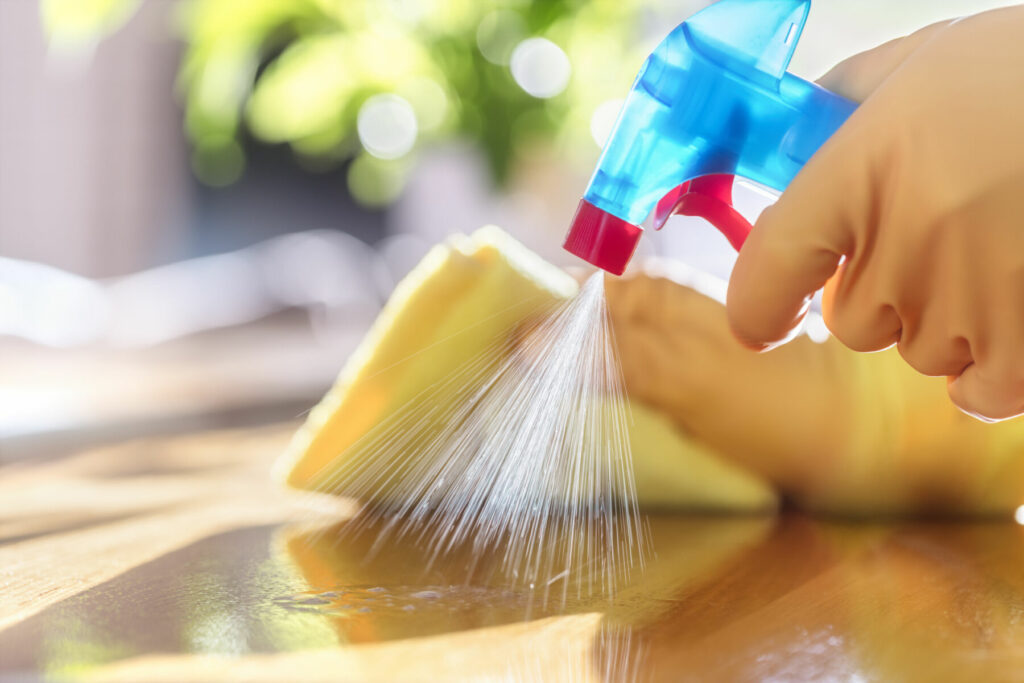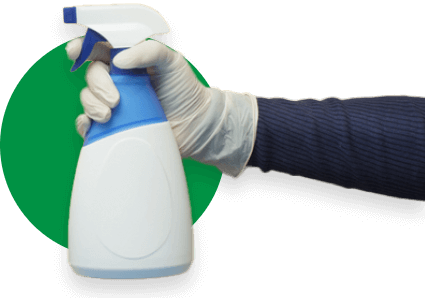Household and Commercial surfaces should have proper disinfection routines. These surfaces can contain a plethora of viruses, germs, and bacteria. As a result, these harmful microorganisms can increase the potential spread of germs and infectious diseases. Understandably, efforts should be made to prevent this from happening.
In order to kill viruses and bacteria, proper disinfection must occur. However, this now poses a new challenge. Each surface is different and requires different disinfecting procedures. In particular, porous items can be quite tricky to disinfect. In this article, we will discuss what porous materials are, how they can be disinfected, and how often they should be disinfected.
What are Porous Materials and Surfaces?
As the term describes, porous materials and surfaces contain tiny pores and holes. This allows for the absorption of liquid and air particles. In addition, soft surfaces such as carpets, fabric, and cardboard are considered porous surfaces. Furthermore, hard porous surfaces include granite, specific plastics, and unfinished wood.
These surfaces can be found in almost any household or public place. For example, granite countertops can be found in many kitchens. Furthermore, many office spaces have soft surfaces like carpets or fabric items. Since these are typically high-traffic areas, viruses and germs can accumulate and spread quickly.

Can Porous Items be Disinfected?
Yes, they can and should, clean items are safer and healthier. To begin with, porous materials can and should be disinfected. Since they are absorptive, porous items can harbor harmful germs and bacteria faster. In addition, these microorganisms may live longer on porous surfaces. Therefore, it is quite important to regularly disinfect these types of surfaces. Moving on, it is essential to read the product label of the disinfectant you choose. This will let you know whether it is suitable for porous surfaces.
In more recent years, COVID-19 has been a great cause of public health concern. Understandably, individuals should try to prevent the spread of this highly-contagious disease. The EPA (Environmental Protection Agency) has registered a number of disinfectants that are safe for porous items and effective against COVID-19. These products contain ingredients such as hydrogen peroxide, hypochlorous acid, isopropyl alcohol, sodium chlorite, and triethylene glycol.
Challenges in Disinfecting Porous Items
There are various different challenges when it comes to disinfecting porous items. As previously stated, these materials absorb harmful microorganisms quickly and hold onto them longer. Furthermore, certain disinfecting products may not be effective. This can result in porous materials being damaged, which can lead to higher replacement costs. In addition, porous surfaces should not be steam cleaned.
Therefore, a more diligent and thorough disinfection process may be required. This can result in the need for disinfectants to have longer contact times. With a bit of time and patience, porous surfaces and items can be effectively disinfected.
Although quite tricky, an expert cleaning service company will be able to properly handle any porous materials.
Solutions for Disinfecting Porous Items
While there are varying challenges, there are also solutions. Porous items can be disinfected, it just requires different methods and procedures. With the proper information, you should be able to effectively disinfect porous surfaces. This can result in a healthier and safer environment. Harmful microorganisms will be eliminated and the potential spread of germs and infectious diseases will be significantly lowered. Dallas Janitorial can provide thorough and effective disinfecting services. A clean towel may be necessary for certain porous surfaces.
Use Appropriate Disinfectants
In order to properly disinfect porous materials and surfaces, you should use appropriate disinfectants. To begin with, it is important to use an EPA-registered disinfectant. Regulated products tend to be safer and more effective. Certain disinfectants may require up to 10 minutes of contact time.
In addition, you should avoid using disinfectants that contain harsh chemicals. These can significantly damage whatever surface you are applying them to. For example, disinfectants containing bleach can distort a carpet’s color. Furthermore, you can use disinfectant sprays on fabrics. This may kill all harmful germs and bacteria without damaging the product.
Apply Disinfectants Properly
Now that you have selected the appropriate disinfectant, it is time to apply it. For the best results, it is recommended to follow the instructions provided by the product label. This can result in a more effective disinfecting process.
For example, certain disinfecting solutions require greater amounts of contact times. This is especially true for porous surfaces. Since they retain viruses and bacteria longer, porous items may require longer disinfecting times.
Depending on the disinfectant, you may need to dilute the solution with warm water. Solutions with higher levels of concentration can damage or discolor porous materials. For hard porous surfaces, you may need to dry them with a clean towel.
Perform Regular Cleaning and Maintenance
Similar to non-porous items, porous surfaces should be disinfected regularly. Despite being effective, disinfection is not a permanent solution. Items and surfaces will become contaminated with viruses and bacteria again.
Therefore, it is essential to have a routine disinfecting and maintenance schedule. By doing so, you can maintain a safe and healthy space. Furthermore, proper maintenance can increase the lifespan of porous surfaces and materials. You should also consider hiring an experienced cleaning company as they can help ensure a sanitized environment with clean items.
Replace Porous Items When Needed
Unfortunately, certain porous items may be beyond disinfecting. They might be contaminated with excess amounts of viruses, bacteria, or mold. This can result in an unsafe environment. In this scenario, it would be most beneficial to simply replace the item.

FAQs About Disinfecting Porous Items
Can you sterilize porous materials?
Yes, you can sterilize porous materials. Unlike disinfecting, sterilization will kill all living microorganisms, harmful or not. Depending on the solution, it can require up to 15 minutes of contact time.
What items cannot be sanitized?
Typically, all items can be sanitized. Depending on the item, certain cleaning methods may need to occur. It is important to find a product that is safe and effective for the surface you are applying it.
What is considered a porous item?
In order to be considered a porous item, it must contain small holes or pores. This will allow for the absorption of liquid and air particles. Conversely, it will also hold onto harmful microorganisms longer. Therefore, these items and surfaces should be properly disinfected regularly. For best effectiveness, make sure to apply an EPA-registered disinfectant.
Are You Interested In Disinfecting Services? Here’s What You Should Do.
At Dallas Janitorial Services, we can help ensure a safe and healthy environment through a variety of cleaning and disinfecting services. To schedule an appointment, you can call 214-778-3689. Our team of experts looks forward to helping you.


